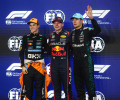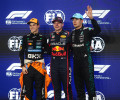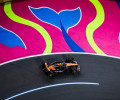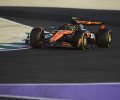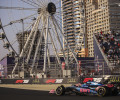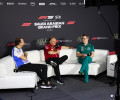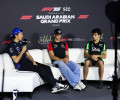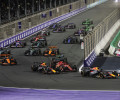Belgian GP : Race Preview
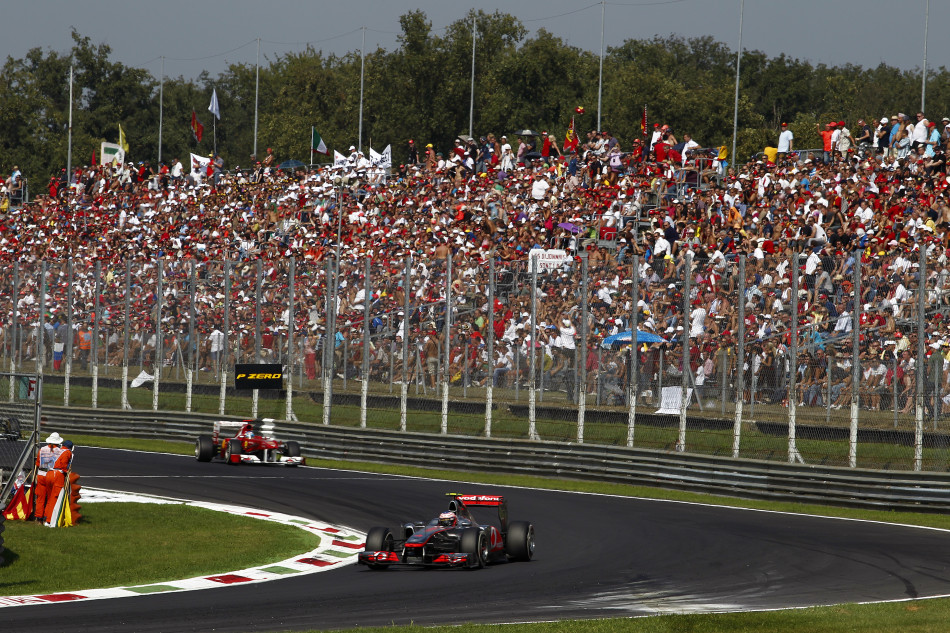
|
|
|
|
|
Race Preview |
||
|
2012 BELGIAN GRAND PRIX
|
||
|
The Circuit de Spa-Francorchamps will host the 12th round of the 2012 Formula One World Championship as the Grand Prix of Belgium signals a return to racing following the series’ summer break. The track, which winds up and down through the Ardennes, has its reputation built on speed. At around 20 seconds, the section from La Source to Les Combes is the longest duration an F1 car will spend on full-throttle in 2012 – should the driver take the Eau Rouge/Raidillon combination flat-out.
|
 |
|
|
Circuit de Spa-Francorchamps
Length of lap: 7.004km 1:45.108 308.052km
Changes to the circuit since 2011
|
||
|
|
||
 |
||
|
|
||
|
Belgian GP Fast Facts |
||
|
► The Circuit de Spa-Francorchamps traces its origins back to the inter-war period. In 1920, the first formal racing layout used public roads between the towns of Malmedy, Stavelot and the village of Francorchamps. By the start of the F1 World Championship era, this had developed into a 14.1km circuit. After many fatalities and serious injuries, that was drastically reduced to a c.7km circuit in the late 1970s. There have been several updates to the circuit since, with many of the faster corners being reprofiled to bring the race track up to the safety standards expected of a modern grand prix circuit. ► Spa-Francorchamps was one of the venues used in 1950 for the inaugural F1 World Championship season. It has been the circuit used for the bulk of Belgian Grands Prix, hosting the race for 44 of its 56 runnings. ► The race has also been held at Nivelles (1972, ’74) and Zolder (1973, 1975-82, ’84). Spa-Francorchamps has hosted the race in all other years, barring 1957, ’59 , ’69, ’71, ’03 and ’06, when no championship Belgian Grand Prix was held. |
► No driver has won the race at more than one of these venues. |
► That same race in 2001 saw Michael Schumacher take his 52nd F1 victory, surpassing the standing record set by Alain Prost in 1993. Schumacher’s new record currently stands at 91 wins, of which six have come at Spa, making him the most successful driver in the history of the Belgian Grand Prix. Behind him come Ayrton Senna (5), Jim Clark (4) and Räikkönen. |
|
|
||
|
Belgian GP Race Stewards Biographies |
||
|
GARRY CONNELLY DEPUTY PRESIDENT, FIA INSTITUTE; DIRECTOR, AUSTRALIAN INSTITUTE OF MOTOR SPORT SAFETY; F1 AND WTCC STEWARD; FIA WORLD MOTOR SPORT COUNCIL MEMBER |
 |
|
| Garry Connelly has been involved in motor sport since the late 1960s. A long-time rally competitor, Connelly was instrumental in bringing the World Rally Championship to Australia in 1988 and served as Chairman of the Organising Committee, Board member and Clerk of Course of Rally Australia until December 2002. He has been an FIA Steward and FIA Observer since 1989, covering the FIA’s World Rally Championship, World Touring Car Championship and Formula One Championship. He is a director of the Australian Institute of Motor Sport Safety and a member of the FIA World Motor Sport Council. | ||
|
|
||
|
STEVEN CHOPPING FORMER VICE PRESIDENT OF THE CONFEDERATION OF AUSTRALIAN MOTOR SPORT (CAMS), CHAIRMAN CAMS JUDICIAL ADVISORY COMMITTEE, PERMANENT CHAIRMAN OF THE STEWARDS PANEL FOR THE V8 SUPERCAR CHAMPIONSHIP |
 |
|
| Steven Chopping began participating in motorsports in the 1960’s. He competed as a driver in various karting, Formula Ford, Australian Formula 2, Sports and Production Car competitions from the early seventies until 1990. Chopping was a steward at the Australian Rally Championship from 1997-2004 and Chairman of the Stewards at the Australian Production Car Rally Championship from 2001-2004. He has been a permanent steward at the V8 Supercar Championship in Australia from 2004 until the present day and has been a steward at the Australian Grand Prix from 2005 onwards. | ||
|
|
||
|
ELISEO SALAZAR FORMER F1 AND IRL RACER, WRC AND DAKAR DRIVER |
 |
|
| Chile’s Eliseo Salazar competed in F1 between 1981-83, driving for March, Ensign, ATS and RAM. After F1, Salazar tried his hand at most forms of motorsport. He returned to the limelight in the late 1980s to race in sportscars, as a works drivers for the Jaguar team. From sports cars he went on to open-wheel success in America, taking an IRL victory at the Las Vegas Motor Speedway, and finished on the podium in the Indy 500. He has the distinction of competing in the Monaco Grand Prix, the Indy 500, the 24 Hours of Le Mans and Daytona and the Dakar Rally, and recently added a WRC appearance after competing in the 2012 Rally Argentina. He finished a creditable 12th driving a Mini WRC. | ||
|
|
||
|
Belgian GP Championship Standings (Drivers) |
||
 |
||
|
|
||
|
Belgian GP Championship Standings (Constructors) |
||
 |
||
|
|
||
|
Belgian GP |
||
|
|
||
|
THURSDAY |
15.00 10.00-11.30 14.00-15.30 16.00 11.00-12.00 14.00-15.00 12.30 14.00 |
|
|
|
||
| ADDITIONAL MEDIA OPPORTUNITIES | ||
|
|
||

 Facebook
Facebook Twitter
Twitter